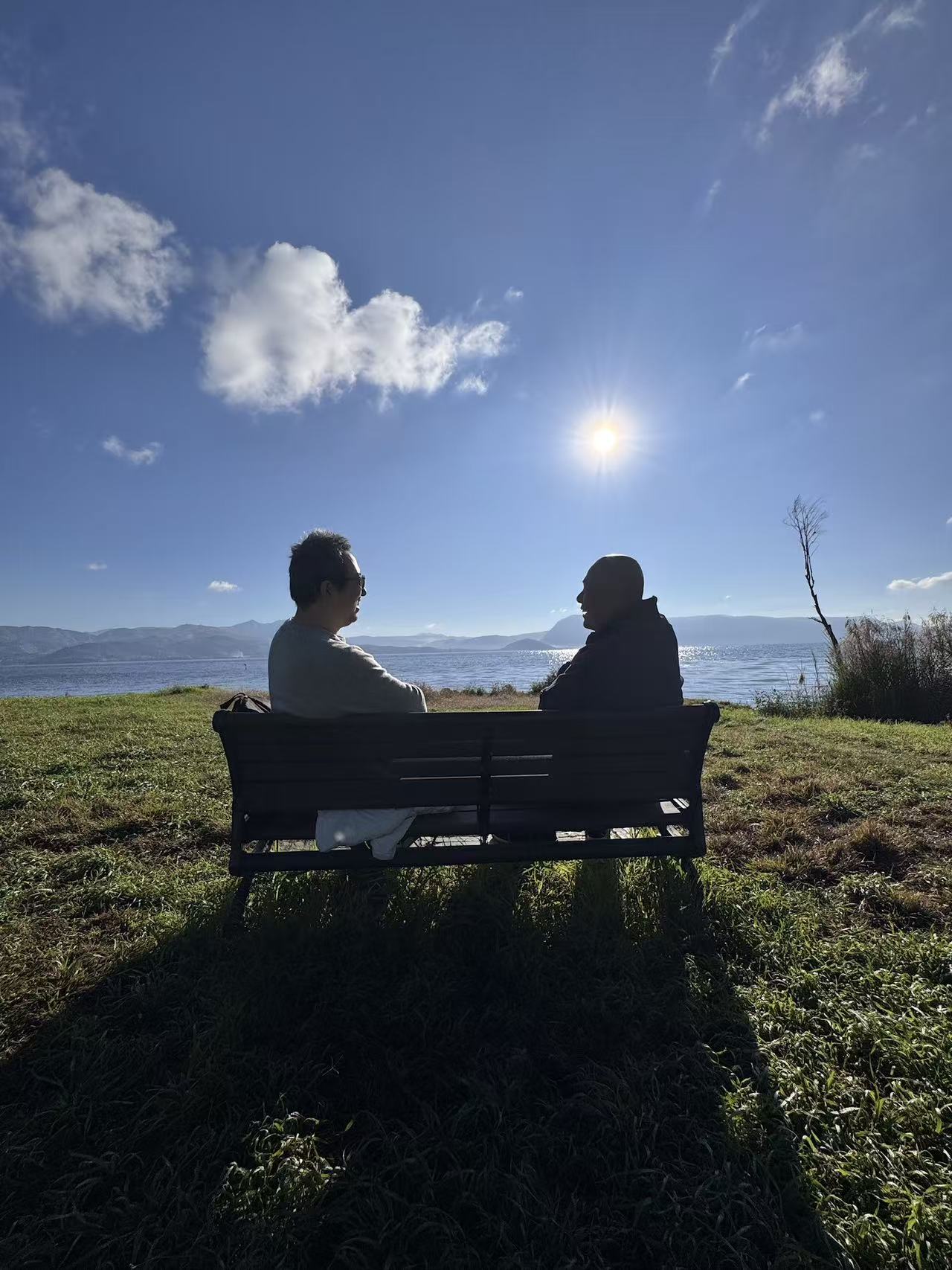In the winter of 2025, I traveled to Dali at the invitation of artist Liu Weiping, helping him push forward his upcoming solo exhibition.
What was meant to be a straightforward residency—part production, part documentation—unfolded over seven days into something much more: a field study on people, place, psyche, and artistic tension.
The wind in Dali was still as clean as I remembered, but what it revealed wasn’t “healing” at all.
It was reality—layered, raw, sometimes overwhelming.
This article is the full account of those seven days.
⸻
Day One: When the Landscape Becomes a Mirror
I first came to Dali at 16. It was quiet then—clear water, open sky, a small town untouched.
More than twenty years later, as my plane descended, I saw a very different place: a city half-dissolved by buzzwords like “freedom,” “spiritual retreat,” and “new youth energy.” A place where local identity had been replaced by something commercial, vague, and restless.
Into this setting I stepped, carrying cameras and notebooks, heading toward Liu Weiping’s studio.
The first thing he said to me was:
“Come, let me enlighten you a bit.”
I froze for a second.
Later, I learned this wasn’t humor—it was his natural linguistic posture.
⸻
The Artist: A Person Built From Order, Fracture, and Repair
For seven days, I followed Liu Weiping everywhere—painting sessions, interviews, long walks, late-night conversations.
Three forces run through him like a looping ecosystem:
1) Childhood Order
Born in Pingyao, raised among ancient city walls, he absorbed a strong internal sense of structure.
That quiet, almost ritualistic order is the backbone of his paintings.
2) Urban Fracture
Moving to Beijing at nine, he grew up under the tension of modern life.
His work often holds this duality: calm surfaces stretched over inner turbulence.
3) Rural Repair
As an adult, he lived in Nanshan, Huangshan, then Dali—repeated cycles of withdrawing to nature, healing, rebuilding, then creating again.
He isn’t just painting portraits.
He’s reconstructing a fractured but resilient internal architecture.
⸻
Seven Days: Walking, Talking, Working, Being Pulled by Language
His daily rhythm was relentless:
paint → interview → film → walk → repeat.
And his language carried a certain “vertical authority”:
• “Let me teach you something.”
• “Your problem is you haven’t been activated.”
• “Most people are brainwashed—I extinguish their fire.”
• “I’ll show you how to rebuild your life.”
These aren’t manipulative lines—they’re how he genuinely processes the world.
If you’re tired, sensitive, or caught in self-doubt, this kind of language can easily overwhelm you.
But beneath his forceful expression, I also saw:
• anxiety,
• self-denial,
• perfectionism,
• pressure from the upcoming show,
• an almost painful sensitivity to people,
• a mix of pessimism and longing.
He wasn’t trying to control others.
He was trying not to be consumed by his own inner chaos.
⸻
Dali Isn’t a Retreat —
It’s a Place Where Everything Gets Exposed
Each day, I walked nearly 20 kilometers across Dali—
from the old town to the studio, to Erhai’s shore, through quiet villages and chaotic alleys.
I saw a place drowning in the aesthetics of “spiritual retreat,” yet full of:
• extreme personalities,
• people packaging laziness as freedom,
• people using “retreat” to escape responsibility,
• people selling mysticism as guidance,
• people using “fate” and “energy” to disguise manipulation.
Liu once said:
“Dali is one giant field of shifting energies.”
To me, it felt more like a magnifying glass.
A place where people’s inner structures—good and bad—are exposed under bright sun.
By the fifth day, I could feel a growing tension between the work, the environment, the artist’s intensity, and my own physical limits.
⸻
Day Seven: I Decide to Leave
Leaving wasn’t impulsive.
It was a conclusion formed by three converging pressures:
1) My body was depleted
The nonstop walking, shooting, and working took a physical toll.
Fatigue made my emotions fragile.
2) My psychological boundaries were shrinking
Between the artist’s intense language, the ambient spiritual theatrics of Dali, and the pressure of production, I found it harder to remain a neutral observer.
I realized that if I stayed longer, I would lose my ability to think independently.
3) The gap between duty and emotional reality
I came to help, to document, to create—not to be pulled into someone else’s psychological orbit.
Collaboration is professional.
Boundaries are survival.
On the seventh morning, standing by Erhai with the wind cutting across the water, I finally understood:
I needed to return to Chengdu—
to a place where my judgment could breathe again.
⸻
Writing This: Not a Complaint,
But a Record of Reality
Liu Weiping is sincere and raw.
His forceful language is a coping mechanism.
His worldview is shaped by years of sensitivity, fracture, and rebuilding.
This article is not an accusation.
It is:
• a documentation of an artist’s real state,
• a record of how environment affects the mind,
• a study of language and power,
• a reflection on emotional boundaries,
• and a conscious act of self-preservation.
This is not a story about conflict—
it’s a story about honesty.
⸻
In the End
Leaving Dali, I realized one thing:
Real spiritual practice doesn’t happen in Dali.
It happens after you leave Dali,
back in your everyday life.
Artists carry pressure and brilliance.
Cities impose speed and competition.
Rural life offers quiet but also emptiness.
And we—
we have to navigate between these forces and find our own ground.
The seven days in Dali made me understand more clearly:
• the structure of an artist’s psyche,
• the tension between city and countryside,
• how environment shapes human behavior,
• how language forms subtle power,
• and how to stay independent while being close to others.
The wind in Dali is still the same.
But I am no longer the same person who arrived.
This chronicle marks the end of a residency—
and the beginning of a new clarity.
